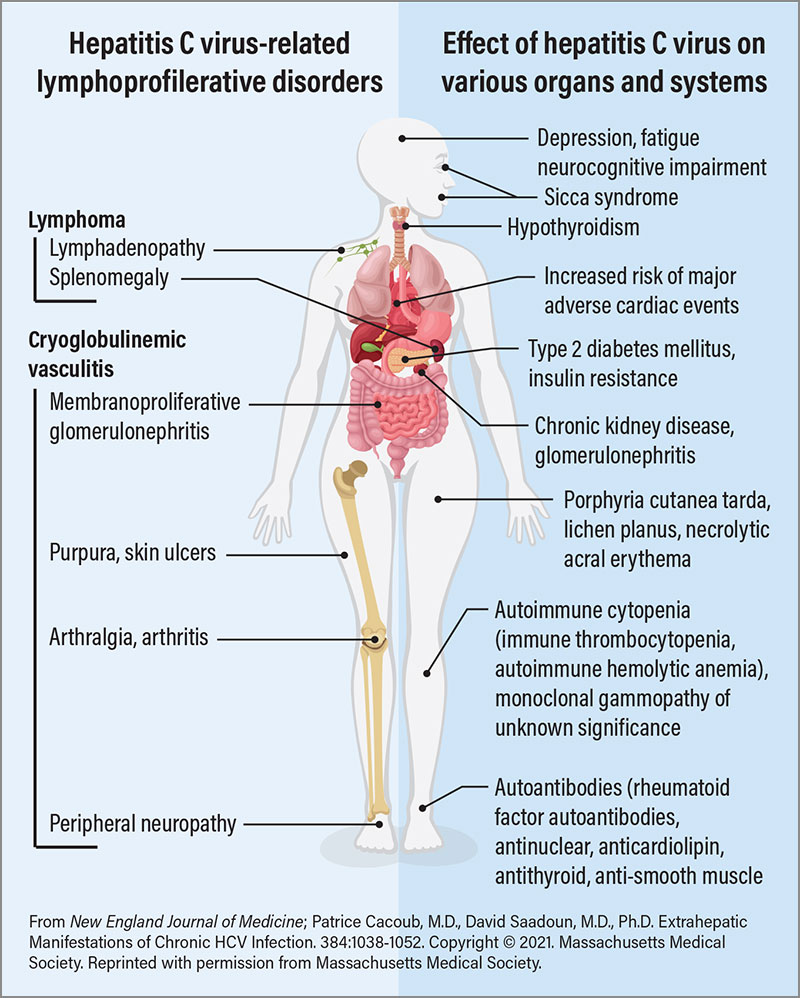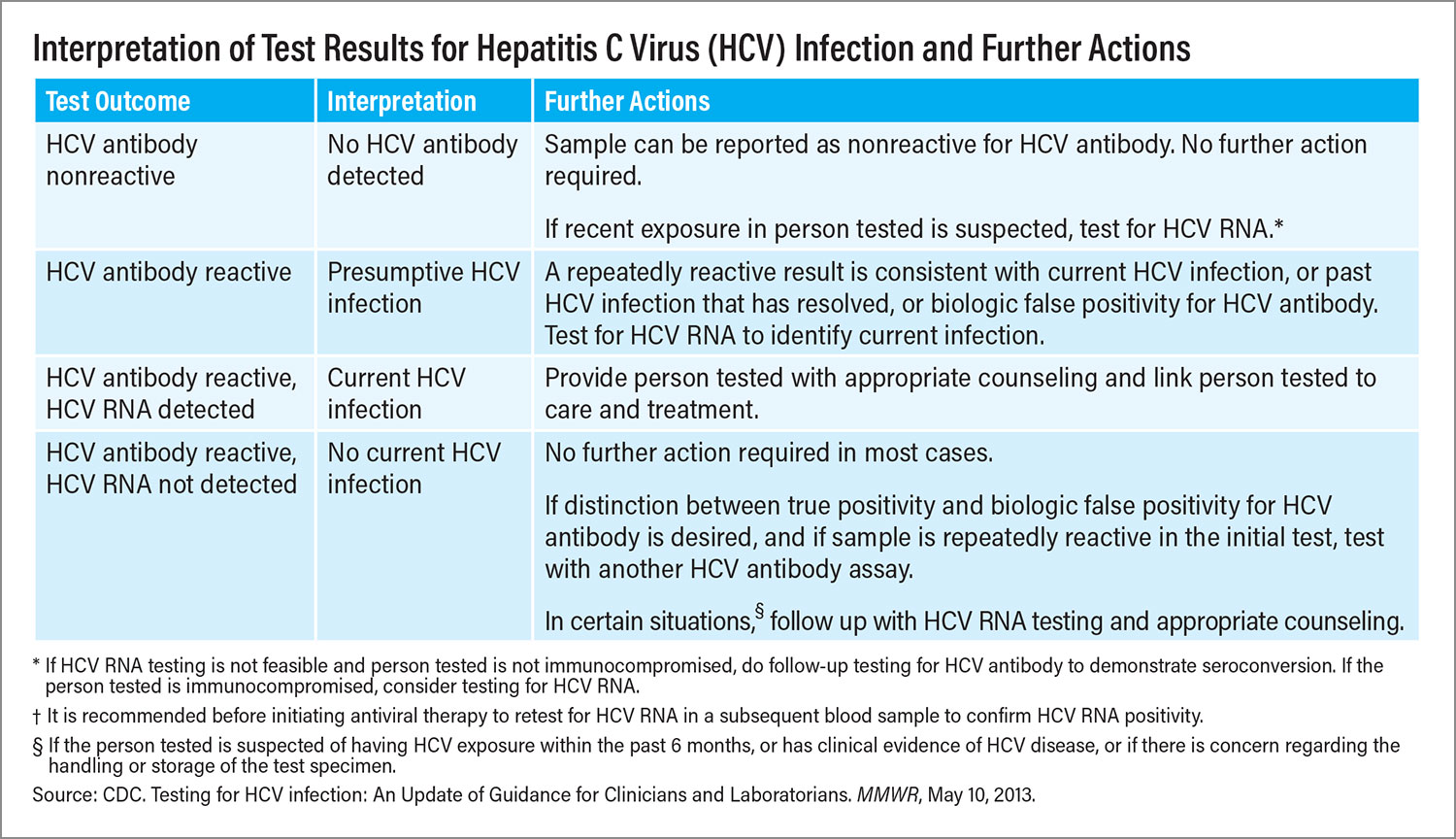A Call to Action: Test Our Patients for Hepatitis C
Abstract
Psychiatrists need to be knowledgeable about hepatitis C, as it is associated with various psychiatric and neuropsychiatric symptoms, and patients are at increased risk for this infection.
Hepatitis C infection is a potentially life-threatening disease with a high prevalence in psychiatric populations. This infection is easily treated but is grossly underdiagnosed because of inadequate screening and testing.

An estimated 2.7 million to 3.9 million people in the United States have chronic hepatitis C, with up to 75% unaware of their infection. More than half of individuals who become acutely infected with hepatitis C progress—often silently—to a chronic infection associated with cirrhosis and hepatocellular carcinoma. Liver dysfunction caused by the hepatitis C virus is a major public health problem, with an estimated 58 million people affected worldwide.
A great many of those affected are individuals with substance use disorders and other psychiatric conditions, so an appreciation of the risk factors and symptoms of hepatitis C infection is essential for our field. In addition, chronic hepatitis infection can produce psychiatric sequelae, so it may be a causal agent for symptoms in some of the patients we see.
The hepatitis C virus is transmitted when blood from an infected person enters the body of an uninfected person. Individuals who are exposed to blood from or needles used by an infected person may be at higher risk for contracting hepatitis C. Given these risk factors, it is not surprising that hepatitis C disproportionately affects individuals with psychiatric conditions or at-risk populations where psychiatric conditions are more prevalent. Individuals at risk of hepatitis C include the following:
Individuals who inject illegal drugs. Up to 80% of new IV drug users contract hepatitis C within six to 12 months.
Individuals who inhale cocaine nasally and share implements for inhalation.
Individuals who have been in jail or prison.
Individuals in close daily contact with an infected person.
Individuals practicing unprotected sexual behaviors, although sexual transmission of hepatitis C is rare.
Individuals who have body piercings or tattoos that were done using infected supplies, although this is uncommon.
Medical professionals.
Dialysis patients.
Individuals who had a blood transfusion or an organ transplant before 1992, when testing of the blood supply began.

The initial infection of this virus can be relatively mild, which is why it is often overlooked. Acute symptoms of hepatitis C are usually seen two to 12 weeks after first exposure; these can include jaundice, anorexia, nausea, vomiting, abdominal pain, fever, dark urine, light-colored stool, joint pain, and fatigue. Chronic hepatitis C infection is causally linked to a long list of serious conditions outside the liver, including cardiovascular disease, insulin resistance, type 2 diabetes, lymphoma, and cryoglobulinemic vasculitis. Chronic infection is also associated with neuropsychiatric symptoms such as cognitive impairment, stroke, depression, and peripheral neuropathy. The figure above summarizes these numerous viral effects.
Despite these many potential complications of chronic infection and recommendations by medical professionals for universal screening for hepatitis C, only one-quarter of patients currently undergo testing. This wide screening gap is frustrating, as cost is not a significant barrier; a screening test for this disease can be obtained at a walk-in laboratory for as little as $40. There is no vaccine available for this virus, so expanded testing to identify carriers, followed by prompt treatment, provides the best approach for early intervention. Basic screening and testing guidelines are summarized in the figure, while the table below includes information about the interpretation of test results.
In terms of treatment, highly effective direct-acting antiviral drugs have replaced interferons as the primary treatment, which has improved patient outcomes. Hepatitis C treatment is associated not only with improvements in physical symptoms and a reduced risk for other serious sequelae, but also improvements in depression and cognitive impairment. The usual duration of antiviral treatment is eight to 12 weeks, so clinicians should consider initiating treatment in psychiatric inpatients expected to have longer hospital stays. ■




